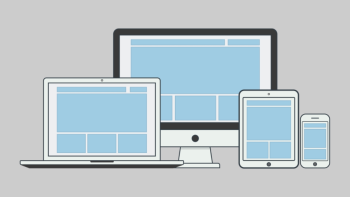Navigating the Web Development Roadmap in 2023
Web development is an ever-evolving field, and 2023 promises to be an exciting year for web developers. As technologies and best practices continue to evolve, staying up-to-date with the latest trends and tools is crucial for success in the industry. In this blog, we will take you on a journey through the Web Development Roadmap for 2023, providing you with insights into what to expect and how to prepare for the challenges and opportunities ahead.
Part 1: The Fundamentals
1.1 HTML, CSS, and JavaScript
The foundation of web development remains the same - HTML, CSS, and JavaScript. In 2023, these core technologies continue to be the building blocks of every web application. Mastering HTML for structuring content, CSS for styling, and JavaScript for interactivity is an essential first step on your journey.
1.2 Responsive Web Design
In a mobile-first world, responsive web design is a non-negotiable skill. You should understand CSS frameworks like Bootstrap and Flexbox to create web applications that adapt seamlessly to various screen sizes and devices.
1.3 Web Accessibility
Web accessibility has gained significant importance. Ensure your websites are inclusive and comply with WCAG (Web Content Accessibility Guidelines) to reach a broader audience and adhere to legal requirements.
Part 2: Server-Side Development
2.1 Node.js
Node.js continues to be a dominant force in server-side development. Learn how to build fast, scalable, and efficient server applications using Node.js and its ecosystem.
2.2 Databases
Explore both SQL and NoSQL databases. SQL databases like MySQL and PostgreSQL are reliable for structured data, while NoSQL databases like MongoDB and Redis are ideal for flexibility and scalability.
2.3 Serverless Computing
Serverless architecture, offered by platforms like AWS Lambda and Azure Functions, is gaining popularity for its cost-efficiency and ease of scalability. Familiarize yourself with serverless technology for building more efficient applications.
Part 3: Front-End Development
3.1 JavaScript Frameworks
Frameworks like React, Angular, and Vue.js continue to dominate front-end development. Master one or more of these to create interactive and dynamic user interfaces.
3.2 State Management
Understanding state management libraries and patterns (e.g., Redux, Mobx, and context API in React) is crucial for complex web applications. Proper state management ensures data consistency and a seamless user experience.
3.3 Web Performance
User experience is closely tied to web performance. Learn about techniques like lazy loading, code splitting, and optimizing images to create fast-loading web applications.
Part 4: DevOps and Deployment
4.1 Version Control
Utilize Git for version control, and learn to collaborate effectively with tools like GitHub or GitLab.
4.2 Continuous Integration and Continuous Deployment (CI/CD)
Implement CI/CD pipelines to automate testing and deployment, enabling faster and more reliable releases.
4.3 Containerization
Containerization technologies like Docker are valuable for consistent deployment across various environments. Understanding container orchestration with Kubernetes is a plus.
Part 5: Security
5.1 Web Security
Keep your web applications secure by understanding common vulnerabilities and applying best practices, including input validation, HTTPS, and security headers.
5.2 API Security
As API-driven applications become more prevalent, mastering API security is crucial. Implement authentication and authorization mechanisms, such as OAuth and JWT.
Part 6: Emerging Trends
6.1 Progressive Web Apps (PWAs)
PWAs are gaining momentum as they provide a native app-like experience on the web. Learn how to develop PWAs to enhance user engagement.
6.2 WebAssembly
WebAssembly is revolutionizing web development, enabling high-performance, low-level code execution in the browser. Familiarize yourself with WebAssembly to tap into its potential.
6.3 Augmented Reality (AR) and Virtual Reality (VR)
WebAR and WebVR are expanding possibilities for immersive web experiences. Explore the integration of AR and VR into web development.
Web development in 2023 offers a plethora of exciting opportunities and challenges. Staying current with the fundamentals, embracing new technologies, and prioritizing web security will help you navigate the evolving landscape. As you embark on your web development journey this year, remember that continuous learning is key to success in this dynamic field. Happy coding!
Navigating the Web Development Roadmap in 2023
Web development is an ever-evolving field, and 2023 promises to be an exciting year for web developers. As technologies and best practices continue to evolve, staying up-to-date with the latest trends and tools is crucial for success in the industry. In this blog, we will take you on a journey through the Web Development Roadmap for 2023, providing you with insights into what to expect and how to prepare for the challenges and opportunities ahead.
Part 1: The Fundamentals
1.1 HTML, CSS, and JavaScript
The foundation of web development remains the same - HTML, CSS, and JavaScript. In 2023, these core technologies continue to be the building blocks of every web application. Mastering HTML for structuring content, CSS for styling, and JavaScript for interactivity is an essential first step on your journey.
1.2 Responsive Web Design
In a mobile-first world, responsive web design is a non-negotiable skill. You should understand CSS frameworks like Bootstrap and Flexbox to create web applications that adapt seamlessly to various screen sizes and devices.
1.3 Web Accessibility
Web accessibility has gained significant importance. Ensure your websites are inclusive and comply with WCAG (Web Content Accessibility Guidelines) to reach a broader audience and adhere to legal requirements.
Part 2: Server-Side Development
2.1 Node.js
Node.js continues to be a dominant force in server-side development. Learn how to build fast, scalable, and efficient server applications using Node.js and its ecosystem.
2.2 Databases
Explore both SQL and NoSQL databases. SQL databases like MySQL and PostgreSQL are reliable for structured data, while NoSQL databases like MongoDB and Redis are ideal for flexibility and scalability.
2.3 Serverless Computing
Serverless architecture, offered by platforms like AWS Lambda and Azure Functions, is gaining popularity for its cost-efficiency and ease of scalability. Familiarize yourself with serverless technology for building more efficient applications.
Part 3: Front-End Development
3.1 JavaScript Frameworks
Frameworks like React, Angular, and Vue.js continue to dominate front-end development. Master one or more of these to create interactive and dynamic user interfaces.
3.2 State Management
Understanding state management libraries and patterns (e.g., Redux, Mobx, and context API in React) is crucial for complex web applications. Proper state management ensures data consistency and a seamless user experience.
3.3 Web Performance
User experience is closely tied to web performance. Learn about techniques like lazy loading, code splitting, and optimizing images to create fast-loading web applications.
Part 4: DevOps and Deployment
4.1 Version Control
Utilize Git for version control, and learn to collaborate effectively with tools like GitHub or GitLab.
4.2 Continuous Integration and Continuous Deployment (CI/CD)
Implement CI/CD pipelines to automate testing and deployment, enabling faster and more reliable releases.
4.3 Containerization
Containerization technologies like Docker are valuable for consistent deployment across various environments. Understanding container orchestration with Kubernetes is a plus.
Part 5: Security
5.1 Web Security
Keep your web applications secure by understanding common vulnerabilities and applying best practices, including input validation, HTTPS, and security headers.
5.2 API Security
As API-driven applications become more prevalent, mastering API security is crucial. Implement authentication and authorization mechanisms, such as OAuth and JWT.
Part 6: Emerging Trends
6.1 Progressive Web Apps (PWAs)
PWAs are gaining momentum as they provide a native app-like experience on the web. Learn how to develop PWAs to enhance user engagement.
6.2 WebAssembly
WebAssembly is revolutionizing web development, enabling high-performance, low-level code execution in the browser. Familiarize yourself with WebAssembly to tap into its potential.
6.3 Augmented Reality (AR) and Virtual Reality (VR)
WebAR and WebVR are expanding possibilities for immersive web experiences. Explore the integration of AR and VR into web development.
Web development in 2023 offers a plethora of exciting opportunities and challenges. Staying current with the fundamentals, embracing new technologies, and prioritizing web security will help you navigate the evolving landscape. As you embark on your web development journey this year, remember that continuous learning is key to success in this dynamic field. Happy coding!










